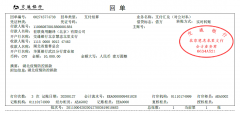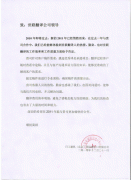“没人能空手走出斗南花市! ”, 说到这, “梅兰竹菊”用英文咋说
Unitrans世联
| 文章转载自 21英语微商城 21世纪英文报
图源:图虫网
图源:图虫网
Konthee met phalaenopses (蝴蝶兰) for the first time in the market. The flower seller told him that the phalaenopsis symbolizes wealth and longevity (长寿) in China, which reminded him of the knowledge of Chinese culture he had learned before. “When I was learning Chinese,” Konthee said, “I learned that in ancient China, plum or mume blossoms, orchids, bamboo and chrysanthemums (梅兰竹菊) symbolized a gentleman’s character. Actually, many flowers in China have implied meanings.”
Konthee是第一次见到蝴蝶兰,卖花人告诉他,蝴蝶兰在中国象征着富贵和长寿。其实,中国的许多花卉都有寓意,古代,梅、兰、竹、菊就被称为“四君子”,代表着君子的清高品德。
Did you know?
Ancient Chinese poets showed a special preference for flowers and offered them different symbolic meanings through their poetry. Here are some flowers and their symbolic meanings in Chinese poems. 中国古代诗人对花有着特殊的偏爱,并通过诗歌赋予它们不同的象征意义。以下是中国诗歌中的一些花卉及其象征意义:
你都知道什么花语呢?你最喜欢的花又是什么?欢迎在评论区发表你的最爱!
图源:图虫网
图源:图虫网
Konthee met phalaenopses (蝴蝶兰) for the first time in the market. The flower seller told him that the phalaenopsis symbolizes wealth and longevity (长寿) in China, which reminded him of the knowledge of Chinese culture he had learned before. “When I was learning Chinese,” Konthee said, “I learned that in ancient China, plum or mume blossoms, orchids, bamboo and chrysanthemums (梅兰竹菊) symbolized a gentleman’s character. Actually, many flowers in China have implied meanings.”
Konthee是第一次见到蝴蝶兰,卖花人告诉他,蝴蝶兰在中国象征着富贵和长寿。其实,中国的许多花卉都有寓意,古代,梅、兰、竹、菊就被称为“四君子”,代表着君子的清高品德。
Did you know?
Ancient Chinese poets showed a special preference for flowers and offered them different symbolic meanings through their poetry. Here are some flowers and their symbolic meanings in Chinese poems. 中国古代诗人对花有着特殊的偏爱,并通过诗歌赋予它们不同的象征意义。以下是中国诗歌中的一些花卉及其象征意义:
你都知道什么花语呢?你最喜欢的花又是什么?欢迎在评论区发表你的最爱! |


























